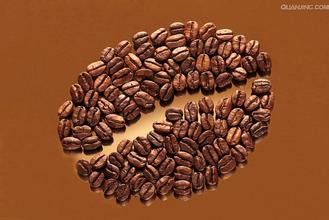Mexico's best coffee producer is Chiapas Black Coffee in the south of the country.
The term "fine coffee" was first put forward by Ms. Knudsen of the United States in Coffee and Tea magazine. At that time, Ms. Knudsen, as a coffee buyer of B.C. Ireland in San Francisco, was very dissatisfied with the neglect of the quality of raw coffee in the industry, and even some big roasters mixed a large amount of Robesda beans in the comprehensive beans, so she put forward the concept of fine coffee to advocate the improvement of the quality of the industry. This term is used to describe coffee beans with distinctive flavor characteristics that grow in a special environment. Its use in international coffee conferences makes it spread rapidly.
Coffee from the world's fourth largest coffee producer, slippery and fragrant, Mexico, the fourth largest coffee producer in the world, produces about 5 million bags of coffee a year. Most of its coffee is produced by nearly 100000 small farmers, and large estates that once manipulated the coffee industry are rare. The yield of Mexican coffee is about 630 kg per hectare. Later, the Mexican Coffee Association (Instituto Mexicano del Caf é, or Inmecafe) took control of the coffee industry. The Coffee Association controls both coffee cultivation and the market for coffee beans that can be exported since November. The association provides farmers with minimum purchase prices, technical advice and other assistance. However, since 1991, the Coffee Association's activities have been reduced and its functions are likely to be further weakened.
The collapse of the coffee agreement (Coffee Agreement) and the disappearance of price support have actually helped some producers by forcing them to develop their own brands and gain closer ties with foreign markets, while the NAFTA agreement between Canada, the United States and Mexico will further help Mexican products export to North America. Some people think that the best giant coffee beans are made in Mexico rather than Guatemala, but the supply and quality of coffee beans in both places can vary. The coffee beans, known as Maragogype, are large-grained and produce coffee that is smooth, mellow and fragrant. The poverty of farmers has caused most coffee to grow under natural conditions, that is, without the use of chemicals such as insecticides or fertilizers.
The best coffee producer in Mexico is Chiapas in the south of the country, where coffee varieties including Tapanchula and Huixtla are grown. The Oaxaca region also produces high-quality coffee beans, of which the Pluma Coixtepec coffee beans, which are grown in natural conditions, are the best. The Oaxaca region also produces Altura Orisaba (Altura Orizaba) coffee and Altura Vatusco (Altura Huatusco) coffee. The Altura Coata Paike (Altura Coatapec) region produces Veracruz (Veracruz) coffee. The best giant coffee beans in Mexico are Liquidambar MS coffee beans.

Important Notice :
前街咖啡 FrontStreet Coffee has moved to new addredd:
FrontStreet Coffee Address: 315,Donghua East Road,GuangZhou
Tel:020 38364473
- Prev

Introduction to the varieties and products of coffee beans in different countries around the world
Hawaii to Hawaii sightseeing, in addition to the beautiful beach, do not forget the Hawaiian coffee beans-Kona. The taste is sweet with the sour taste of wine, which is very special. The most traditional and famous coffee in Hawaii. However, due to the low production here, the surprisingly high cost, and the increasing demand for individual coffee in the United States and other places, its unit price is not only getting higher and higher.
- Next

Introduction to the products, types and quality of coffee all over the world
⑴ Mogaga actually used to be the place of export of Arabica coffee, not the place of origin. Now the trade export port of Arabica coffee has been transferred to southern Asia.
Related
- Does Rose Summer choose Blue, Green or Red? Detailed explanation of Rose Summer Coffee plots and Classification in Panamanian Jade Manor
- What is the difference between the origin, producing area, processing plant, cooperative and manor of coffee beans?
- How fine does the espresso powder fit? how to grind the espresso?
- Sca coffee roasting degree color card coffee roasting degree 8 roasting color values what do you mean?
- The practice of lattes: how to make lattes at home
- Introduction to Indonesian Fine Coffee beans-- Java Coffee producing area of Indonesian Arabica Coffee
- How much will the flavor of light and medium roasted rose summer be expressed? What baking level is rose summer suitable for?
- Introduction to the characteristics of washing, sun-drying or wet-planing coffee commonly used in Mantenin, Indonesia
- Price characteristics of Arabica Coffee Bean Starbucks introduction to Manning Coffee Bean Taste producing area Variety Manor
- What is the authentic Yega flavor? What are the flavor characteristics of the really excellent Yejasuffi coffee beans?

